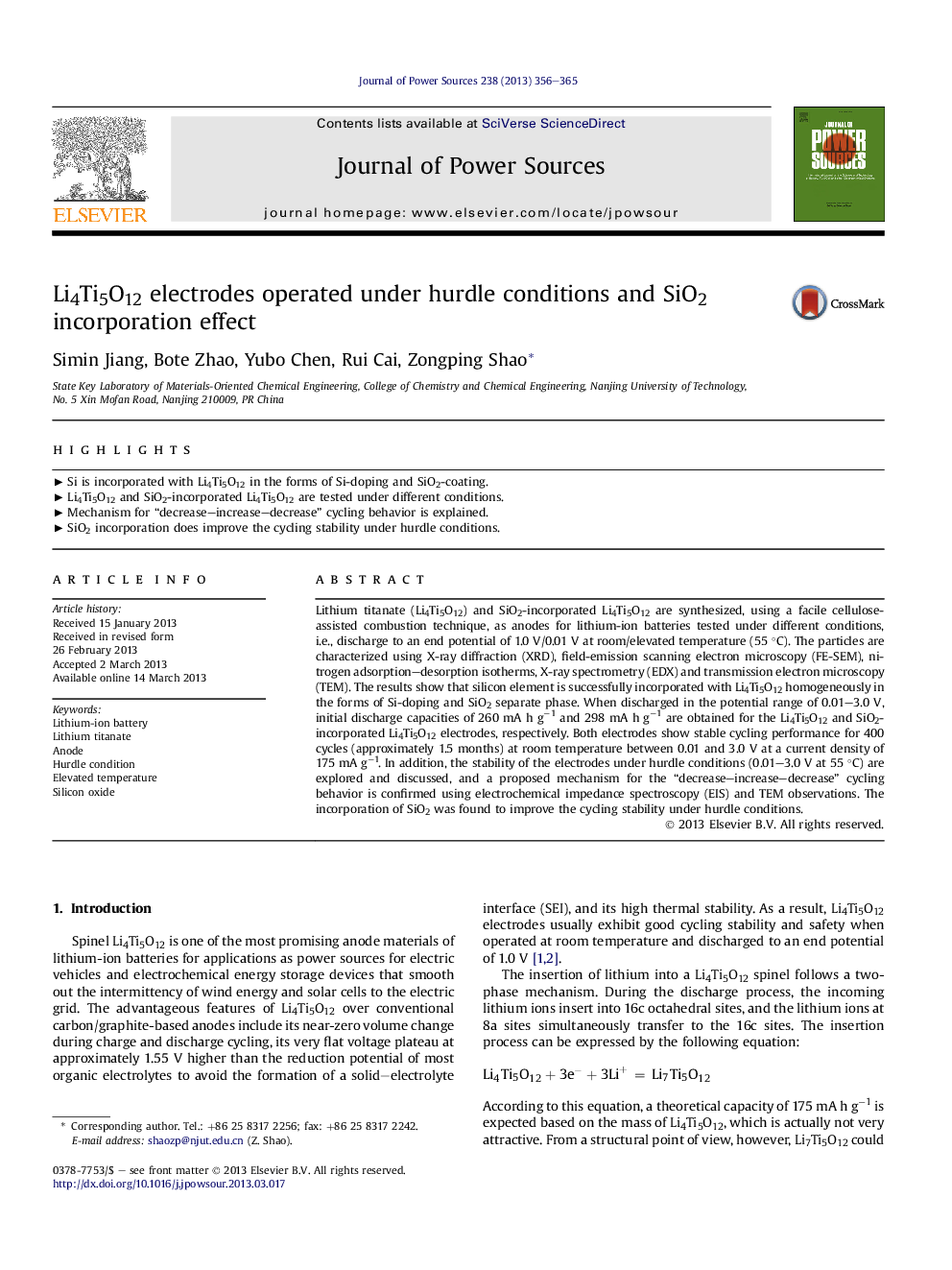| Article ID | Journal | Published Year | Pages | File Type |
|---|---|---|---|---|
| 1284382 | Journal of Power Sources | 2013 | 10 Pages |
Lithium titanate (Li4Ti5O12) and SiO2-incorporated Li4Ti5O12 are synthesized, using a facile cellulose-assisted combustion technique, as anodes for lithium-ion batteries tested under different conditions, i.e., discharge to an end potential of 1.0 V/0.01 V at room/elevated temperature (55 °C). The particles are characterized using X-ray diffraction (XRD), field-emission scanning electron microscopy (FE-SEM), nitrogen adsorption–desorption isotherms, X-ray spectrometry (EDX) and transmission electron microscopy (TEM). The results show that silicon element is successfully incorporated with Li4Ti5O12 homogeneously in the forms of Si-doping and SiO2 separate phase. When discharged in the potential range of 0.01–3.0 V, initial discharge capacities of 260 mA h g−1 and 298 mA h g−1 are obtained for the Li4Ti5O12 and SiO2-incorporated Li4Ti5O12 electrodes, respectively. Both electrodes show stable cycling performance for 400 cycles (approximately 1.5 months) at room temperature between 0.01 and 3.0 V at a current density of 175 mA g−1. In addition, the stability of the electrodes under hurdle conditions (0.01–3.0 V at 55 °C) are explored and discussed, and a proposed mechanism for the “decrease–increase–decrease” cycling behavior is confirmed using electrochemical impedance spectroscopy (EIS) and TEM observations. The incorporation of SiO2 was found to improve the cycling stability under hurdle conditions.
► Si is incorporated with Li4Ti5O12 in the forms of Si-doping and SiO2-coating. ► Li4Ti5O12 and SiO2-incorporated Li4Ti5O12 are tested under different conditions. ► Mechanism for “decrease–increase–decrease” cycling behavior is explained. ► SiO2 incorporation does improve the cycling stability under hurdle conditions.
